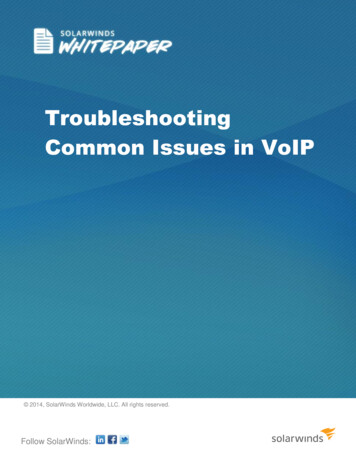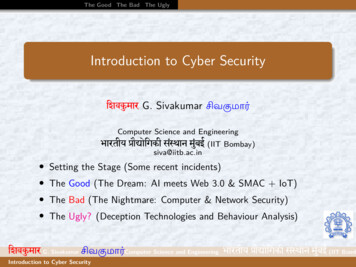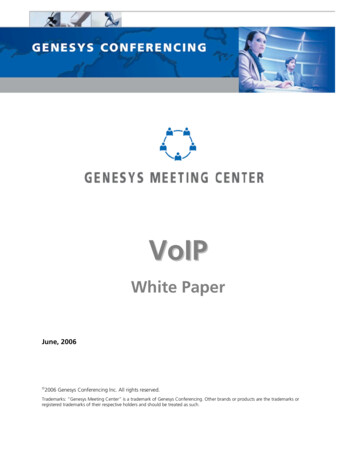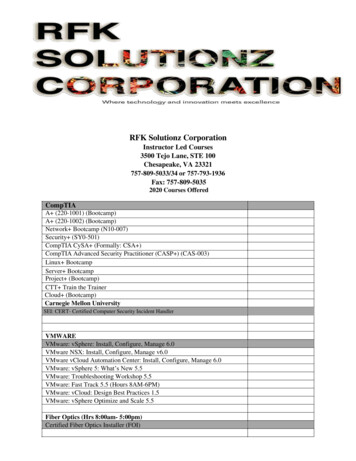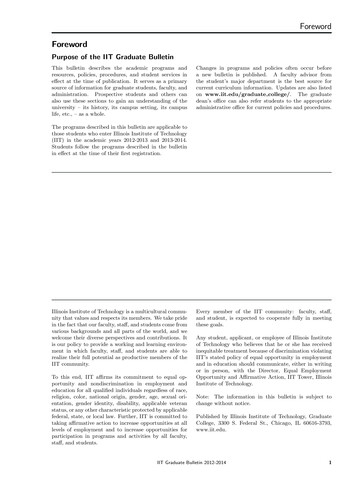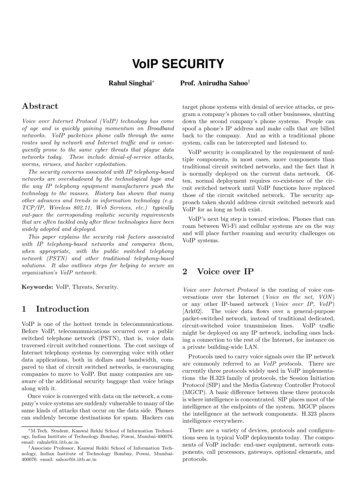
Transcription
VoIP SECURITYRahul Singhai AbstractVoice over Internet Protocol (VoIP) technology has comeof age and is quickly gaining momentum on Broadbandnetworks. VoIP packetizes phone calls through the sameroutes used by network and Internet traffic and is consequently prone to the same cyber threats that plague datanetworks today. These include denial-of-service attacks,worms, viruses, and hacker exploitation.The security concerns associated with IP telephony-basednetworks are overshadowed by the technological hype andthe way IP telephony equipment manufacturers push thetechnology to the masses. History has shown that manyother advances and trends in information technology (e.g.TCP/IP, Wireless 802.11, Web Services, etc.) typicallyout-pace the corresponding realistic security requirementsthat are often tackled only after these technologies have beenwidely adopted and deployed.This paper explains the security risk factors associatedwith IP telephony-based networks and compares them,when appropriate, with the public switched telephonynetwork (PSTN) and other traditional telephony-basedsolutions. It also outlines steps for helping to secure anorganization’s VoIP network.Keywords: VoIP, Threats, Security.1IntroductionVoIP is one of the hottest trends in telecommunications.Before VoIP, telecommunications occurred over a publicswitched telephone network (PSTN), that is, voice datatraversed circuit switched connections. The cost savings ofInternet telephony systems by converging voice with otherdata applications, both in dollars and bandwidth, compared to that of circuit switched networks, is encouragingcompanies to move to VoIP. But many companies are unaware of the additional security baggage that voice bringsalong with it.Once voice is converged with data on the network, a company’s voice systems are suddenly vulnerable to many of thesame kinds of attacks that occur on the data side. Phonescan suddenly become destinations for spam. Hackers can M.Tech. Student, Kanwal Rekhi School of Information Technology, Indian Institute of Technology Bombay, Powai, Mumbai-400076.email: rahuls@it.iitb.ac.in† Associate Professor, Kanwal Rekhi School of Information Technology, Indian Institute of Technology Bombay, Powai, Mumbai400076. email: sahoo@it.iitb.ac.inProf. Anirudha Sahoo†target phone systems with denial of service attacks, or program a company’s phones to call other businesses, shuttingdown the second company’s phone systems. People canspoof a phone’s IP address and make calls that are billedback to the company. And as with a traditional phonesystem, calls can be intercepted and listened to.VoIP security is complicated by the requirement of multiple components, in most cases, more components thantraditional circuit switched networks, and the fact that itis normally deployed on the current data network. Often, normal deployment requires co-existence of the circuit switched network until VoIP functions have replacedthose of the circuit switched network. The security approach taken should address circuit switched network andVoIP for as long as both exist.VoIP’s next big step is toward wireless. Phones that canroam between Wi-Fi and cellular systems are on the wayand will place further roaming and security challenges onVoIP systems.2Voice over IPVoice over Internet Protocol is the routing of voice conversations over the Internet (Voice on the net, VON )or any other IP-based network (Voice over IP, VoIP )[Ark02]. The voice data flows over a general-purposepacket-switched network, instead of traditional dedicated,circuit-switched voice transmission lines. VoIP trafficmight be deployed on any IP network, including ones lacking a connection to the rest of the Internet, for instance ona private building-wide LAN.Protocols used to carry voice signals over the IP networkare commonly referred to as VoIP protocols. There arecurrently three protocols widely used in VoIP implementations the H.323 family of protocols, the Session InitiationProtocol (SIP) and the Media Gateway Controller Protocol(MGCP). A basic difference between these three protocolsis where intelligence is concentrated. SIP places most of theintelligence at the endpoints of the system. MGCP placesthe intelligence at the network components. H.323 placesintelligence everywhere.There are a variety of devices, protocols and configurations seen in typical VoIP deployments today. The components of VoIP include: end-user equipment, network components, call processors, gateways, optional elements, andprotocols.
22.1December - March 2006H.323H.323 is a protocol suite that lays a foundation for IP basedreal-time communications including audio, video and data[WK05]. The architecture schematic is depicted in the figure 1.media streams. There are audio codecs (G.711, G.723.1,G.728, etc.) and video codecs (H.261, H.263) that encodeand decode the audio and video data.Figure 2: H.323 Protocol StackFigure 1: H.323 ArchitectureThe H.323 standard proposes an architecture that is composed of four logical components [Mit01] Terminals, Gateways, Gatekeepers and Multi-point Control Units (MCUs).Terminals are LAN client endpoints that are normallybound to a specific address and gateway, and provides realtime, two-way communication with either another H.323terminal, an H.323 gateway or an MCU. Gateway is anendpoint on the network that provides for real-time, twoway communications between H.323 terminals on the IPnetwork with other ITU terminals on a switch-based network like traditional public switched telephone network(PSTN), SIP network or to another H.323 gateway. Thegateways handle different transmission formats. Gatekeeperis the central point for all the calls within its zone and provides services to the registered endpoints such as addresstranslation, admissions control, call signaling, call authorization and authentication, call management, call routing,accounting, and bandwidth management. MCU acts asan endpoint on the network for providing capability forthree or more terminals and gateways to participate in amulti-point conference. The MCU consists of a mandatoryMulti-point Controller (MC) and an optional Multi-pointProcessor (MP). The MC’s functions are to determine thecommon capabilities of conferencing terminals, using theH.245 protocol. The multiplexing of audio, video and datastreams is handled by the MP under control of the MC.A schematic description of the H.323 protocol stack isgiven in figure 2. The unreliable but low latency UDPis used to transport audio, video and registration packets.Whereas the reliable but slow TCP is used for data andcontrol packets in call signaling. The T.120 protocol isused for data transfer. H.323 provides three control protocols H.225/Q.931 call signaling, H.225/RAS call signalingand H.245 Media control. The H.225/Q.931 is used for callsignaling control. The H.225/RAS channel is used for establishing a call from the source to the receiving host. Afterthe call is established, H.245 is finally used to negotiate the2.2Session Initiation Protocol (SIP)SIP is used for initiating, modifying, and terminating atwo-way interactive user session that involves multimediaelements such as video, voice, instant messaging, onlinegames, and virtual reality [RSC 02]. SIP is used in association with its other IETF sister protocols like the SAP,SDP and MGCP (MEGACO) to provide a broader rangeof VoIP services. The SIP architecture is similar to HTTP(client-server protocol) architecture. It comprises requeststhat are sent from the SIP user client to the SIP Server.The Server processes the request and responds to the client.A request message, together with the associated responsemessages makes a SIP transaction.SIP is an application-level protocol, i.e., it is decoupledfrom the protocol layer that it’s transported across. Using TCP allows use of secure sockets layer (SSL)/transportlayer security (TLS) providing more security whereas, UDPallows for faster, lower latency, connections. SIP dependson Session Description Protocol (SDP) for negotiation ofsession parameters such as codec identification and media.It supports user mobility through proxy servers and redirecting requests to the user’s currently registered location.The SIP architecture (figure 3) specifies two components:user agents and servers. A SIP User Agent is an end system acting on behalf of the user. The UA software containsclient and server components. User Agent Client (UAC) isthe user client portion, which is used to initiate a SIP request to the SIP servers or the UAS, whereas User AgentServer (UAS) is the user server portion that listens and responds to SIP requests. SIP Servers provide SIP call setupand services. Registration Server receives and authenticates registration requests from SIP users and updates theircurrent location with itself. Proxy Server receives SIP requests and forwards them to the next-hop server, whichhas more information of the called party. Redirect Serverresolves information for the UA client. On receipt of theSIP request, it determines the next-hop server and returns
SINGHAI AND SAHOO : VoIP SECURITY3the address of the next-hop server to the client instead offorwarding the request to the next-hop server itself (as inthe case of SIP proxy).Figure 4: MGCP Architecture3Figure 3: SIP ArchitectureThe endpoints begin by connecting with a proxy and/orredirect server which resolves the destination number intoan IP address. It then returns that information to the originating endpoint which is responsible for transmitting themessage directly to the destination. A security advantageof SIP is that it uses one port.2.3Media Gateway(MGCP)ControlProtocolMGCP exploded H.323’s gatekeeper model and removedthe signalling control from the gateway, putting it in a media gateway controller or soft-switch [RSC 02]. This devicewould control multiple media gateways. A Media Gatewayexecutes commands sent by the centralized Media GatewayController (MGC) and is designed to convert data betweenPSTN to IP, PSTN to ATM, ATM to IP, and also IP toIP, thus providing mechanisms to interconnect with otherVoIP networks.MGCP defines the communication between “CallAgents” (call control elements or MGCs) and gateways (figure 4). It is a control protocol that monitors the events onIP phones and gateways and instructs them to send mediato specified addresses. These Call agents are assumed tohave synchronized with each other and they issue coherentcommands to the gateways under their control. The issuedcommands are executed by the gateways in a master/slavemanner. MGCP defines the concepts of “Endpoints” and“Connections” to describe and establish voice paths between two participants. Similarly, it has defined “Events”and “Signals” to describe set-up or teardown of sessions.VoIP Security Threat ScenariosA VoIP deployment faces a variety of threats from different networking layers and areas of trust from within thenetwork [Dha05]. For instance, an attacker can try to compromise a VoIP gateway, cause a denial-of-service attack tothe Call Manager, exploit a vulnerability in a vendor’s SIPprotocol implementation or try to hijack VoIP calls throughtraditional TCP hijacking, UDP spoofing, or applicationmanipulation. The attacks against a VoIP network can becategorized as follows: VoIP Application Level Attacks : At the application level, there are a variety of VoIP specific attacksthat can be performed to disrupt or manipulate service. Some of them include:– Call Hijacking : An attacker can also spoof aSIP response, indicating to the caller that thecalled party has moved to a rogue SIP address,and hijack the call.– Resource Exhaustion : A potential DoS attackcould starve the network of IP addresses by exhausting the IP addresses of a DHCP server in aVoIP network.– Eavesdropping : An attacker with local accessto the VoIP LAN may sniff the network traffic anddecipher the voice conversations. A tool namedVOMIT (voice over misconfigured Internet telephones) can be downloaded to easily perform thisattack.– Message Integrity : The attacker may be ableto conduct a man-in-the-middle attack and alterthe original communication between two parties.– Toll Fraud : An attacker can impersonate avalid user/IP phone and use the VoIP networkfor making free long distance calls.– Denial of Service (DoS) : DoS is caused byanything that prevents the service from being delivered. A DoS can be the result of unavailable
4December - March 2006bandwidth or VoIP components being unavailable. Many things can cause a DoS including:a network getting congested to a level that itcannot provide the bandwidth needed to supportthe application; servers not capable of handlingthe traffic; extraneous services may be runningthat reduce the available resources to the server;malicious programs such as viruses and Trojanhorses; other malicious programs with the purpose of causing DoS; or hacking activity.By spoofing end-point identity, an attacker maycause a DoS in SIP-based VoIP networks by sending a “CANCEL” or “BYE” message to either ofthe communicating parties and end the call. SinceSIP is UDP based, sending a spoofed ICMP “portunreachable” message to the calling party couldalso result in a DoS. If HTTP Authentication isbeing used, user-agents and proxy servers shouldchallenge questionable requests with only a single401 (Unauthorized) or 407 (Proxy AuthenticationRequired), forgoing the normal response retransmission algorithm, and thus behaving statelesslytowards unauthenticated requests. Retransmitting the 401 (Unauthorized) or 407 (Proxy Authentication Required) status response amplifiesthe problem of an attacker using a falsified headerfield value (such as Via) to direct traffic to a thirdparty.If DoS is caused by bandwidth constraints, potential solutions are increasing the bandwidthand/or isolating the VoIP traffic so that it getsservice first. Various methods of ensuring serversdon’t stop working, such as fail-over methods likeclustering, can help reduce DoS from failing components. Each component of the VoIP system offered by the vendor, should be evaluated, removing those that are unnecessary. Server size shouldbe planned such that all desired vendor servicesand expected traffic can be supported, addingsome percentage for expected growth. Defenseagainst DoS attacks of public servers can best bedone by locating the device with the public available IP addresses behind a firewall or other device that only allows communication from trustedsources. Also, harden the operating systems inuse, removing all unnecessary services and applications from the servers and workstations, patching, etc. Availability : VoIP networks face a serious riskof availability.The availability risk result fromavailability-based attacks against protocols, endpoints,network servers, and the kind of attacks designed to reduce the quality of speech or that target simple equipment malfunction(s). The main risk, and one that iseven more basic, is the lack of electricity to power endpoints and other elements making up an VoIP networkor infrastructure.The VoIP infrastructure components interact withother computer systems on the IP network. Theyare thus more susceptible to a security breach thanthe equipment combining the PSTN, which is usually proprietary equipment whose operations are somewhat obscure. Any DoS attacks such as SYN floods orother traffic surge attacks that exhaust network resources (e.g. bandwidth, router connection table, etc.)could also severely impact all VoIP communications.Even worms or zombie hosts scanning for other vulnerable servers could cause unintentional traffic surgesand crater availability of these VoIP services. Physical Access : Physical access to the network orto some network component(s) is usually regarded asan end-of-game scenario, a potential for total compromise in VoIP. For example, if a malicious party is ableto gain unauthorized physical access to the wire connecting a subscriber’s IP Phone to its network switch,the attacker will be able to place calls at the expenseof the legitimate subscriber while continuing to let thesubscriber place calls at the same time. With thePSTN, a similar scenario would unveil the maliciousparty when the legitimate subscriber took the handsetoff hook. Non-Trusted Identities : Without the proper network design and configuration of an IP telephonybased network, one cannot trust the identity of another call participant. The user’s identity, the “callID” information (e.g. a phone number), can be easilyspoofed. An identity-related attack might occur anywhere along the path signaling information is takingbetween call participants. A malicious party mightperform digital impersonation, while spoofing an identity of a call participant or a targeted call participant,where the voice samples might have been gleaned fromthe IP telephony-based network itself. Attacks against the underlying VoIP devices’Operating System : VoIP devices such as IP phones,Call Manager, Gateways, and Proxy servers inheritthe same vulnerabilities of the operating system orfirmware they run on top of. For instance, the CiscoCall Manager is typically installed on Windows 2000and the Avaya Call Manager on Linux. There are hundreds of remotely exploitable vulnerabilities in flavorsof Windows and Linux operating systems for whichthere are numerous “point-and-shoot” exploits freelyavailable for download on the Internet. No matter howsecure an actual VoIP application happens to be, thisbecomes irrelevant if the underlying operating systemis compromised. The placement of Intelligence : With the PSTN,the phones are no more than a “dumb terminal” wherethe telephony switch holds the actual intelligence.With VoIP signaling protocols, some or all of the intelligence is located at the endpoints. An endpointsupporting this type of signaling protocol will have
SINGHAI AND SAHOO : VoIP SECURITYthe appropriate functionality and ability to interactwith different VoIP components and services as wellas different networking components within the VoIPnetwork. A malicious party using such an endpoint,or a modified client, will have the same ability to interact with these components. Configuration Weaknesses in VoIP devices :Many of the VoIP devices in their default configurationmay have a variety of exposed TCP and UDP ports.The default services running on the open ports may bevulnerable to DoS, buffer overflows or weak passwords,which may result in compromising the VoIP devices.For instance, multiple installations of the Cisco CallManager that runs an IIS server were reportedly compromised by the Nimda and the Code Red worms. Attacks against IP Infrastructure : Compared tothe PSTN, VoIP networks face a greater types of attacks, as a result of a combination of key factors outlined below [Tuc04]:– Since VoIP uses the IP protocol as the vassalfor carrying both data and voice, it inherits theknown (and unknown) security weaknesses thatare associated with the IP protocol. For instanceVoIP protocols rely on TCP and UDP as transport mediums and hence also vulnerable to anylow level attacks on these protocols such as session hijacking (TCP), malicious IP Fragmentation, spoofing (UDP), TCP RST window bruteforcing, or a variety of IP protocol anomalieswhich may cause unpredictable behavior in someVoIP services.– Although signaling and media might take different routes, they share the same medium: theIP network. Unlike the PSTN, where the onlypart of the telephony network both the signaling and media share is the connection betweenthe subscriber’s phone and its telephony switch(thereafter the signaling information will be carried on a different network physically separatedfrom the media the SS7 network), with IP telephony no such isolation or physical separation between voice samples and signaling information isavailable, increasing the risk of misuse.– In several VoIP architectures, the signaling andmedia information traverses several IP networkscontrolled by different entities (e.g. Internet telephony, different service providers, different telecom companies). In some cases, it is not be possible to validate the level of security (and eventrust) that different providers enforce with theirnetwork infrastructure, making those networks apotential risk factor and an attack venue. VoIP Protocols Design Flaws : IP telephonyrelated protocols were not designed with security astheir first priority or as a prime design goal. Some5of those protocols added security features when newerprotocol versions were introduced. Other IP telephonyprotocols introduced some security mechanisms onlyafter the IETF threatened not to accept a newer version of the protocol if security was not part of it. Despite such demands and an effort to introduce “decent”security mechanisms within some IP telephony protocols during their design phase, in some cases inappropriate security concepts were adopted only to satisfythe IETF. Some of those security mechanisms weresimply not enough, regarded as useless or impractical,giving a false sense of security to the users of these IPtelephony protocols.An example of a security technology that might causemore harm than good is encryption. Encryption affectsvoice quality since it adds delay on top of the usual delay experienced with an IP telephony-based networkand therefore degrades voice quality. Although someIP telephony-related protocol specifications mandatethe use of encryption, it is sometimes simply not feasible to use encryption with those protocols. An example is the draft version of the new RTP protocol, whichmandates the use of triple-DES (data encryption standard) encryption. We need not forget that most IPPhones today are not powerful enough to handle encryption.The use of VPN technology is another good example ofa security-related technology that degrades voice quality. Where we have more than two or three encryptedIP telephony “tunnels”, voice quality is usually unbearable, the result of current encryption technologiescombined with realtime multimedia demands.Another flaw, for example, is a signaling protocol thatdoes not maintain knowledge about changes made tothe media path during a call. If one is able to abuse themedia path, the signaling path will remain unnotifiedand clueless about the changes performed to the mediapath. Another example is a signaling protocol thatdoes not have an integrity-checking mechanism. Improper IP Telephony network designs : Thecurrent offered network designs for the implementation of IP telephony-based networks do not offer propermechanisms to defeat several basic hazards to the IPtelephony network. For example, IP telephony equipment (devices) is not authenticated to the network,and this makes the work of the phreaker easier; in somecases, by plugging a rogue device to the network, freephone calls can be made. Also in many IP telephonybased networks an IP Phone’s (a user’s) actual location is not checked against the credentials it uses. It isnot enough that the network switch is able to perform“port security” and bind the port connected to an IPPhone with the phone’s MAC address. There shouldbe a mechanism to correlate between the credentialspresented, the MAC address the phone is using, andthe physical port on the network switch it is connectedto.
6December - March 2006 Functional protocol testing or Fuzzing : It is amethod of finding bugs and vulnerabilities by creating different types of packets for that protocol whichcontain data, that pushes the protocol’s specificationsto the point of breaking them. These specially craftedanomalous packets are consequently sent to an application, operating system, or hardware device capableof processing that protocol, and the results are thenmonitored for any abnormal behavior (crash, resourceconsumption, etc.).Functional protocol testing has already led to a widevariety of DoS and buffer overflow vulnerability discoveries in vendor implementations of VoIP products thatuse H.323 and SIP. Many of these vulnerabilities havebeen the direct result of focused VoIP research conducted by the University of Finland’s PROTOS group,which specializes in the security testing of protocol implementations. The PROTOS group typically makestheir tools available to the public, which means anyone can download and run the tools necessary to crashvulnerable implementations.4H.323 Security ConcernsThe four security goals, authentication, integrity, privacy,and non-repudiation are accomplished with the four mechanisms: configuration, authentication, key exchange andencryption. During the initial stage of configuration, thedevice is authorized to the network and may be authenticated. Integrity and privacy are accomplished throughencryption using symmetric or asymmetric keys. A signature is attached to gain the fourth goal of non-repudiation[Wei01].4.1H.323 security : H.235The H.235 protocols of H.323 provide privacy (no eavesdropping), message integrity and authentication (ensuringthat people really are who they claim to be) and are expressed as Annexes to H.235 Version 3 [KWF05]. They areAnnexes D, E, F, G, H, and I as follows:4.1.1gatekeeper with its key and accepts it if the verification issuccessful.The security provided by the baseline security profileworks on a hop-by-hop basis (figure 5). A hop is a trustedH.235 element along the communication path (e.g. a gatekeeper, MCU, proxy). Hop-by-hop means that at everyhop the security information is verified and recomputed.On a path containing two end-points and one gatekeeperthere are two such hops. One hop from the first end-pointto the gatekeeper and one hop from the gatekeeper to thesecond end-point. After the first hop, the gatekeeper verifies the authentication information from the first end-point,removes it from the message, adds authentication information for the second end-point to the message and forwardsthe message to the second end-point.Annex D - Baseline Security ProfileIn the baseline security profile, end-point and gatekeepershare a secret key which is used as basis for all cryptographic mechanisms [Tha05]. These keys are stored in theback-end service. On every end-point registration, the gatekeeper requests the shared secret key with that respectiveend-point from the back-end service. The gatekeeper usesthis key to verify messages sent by the end-point (also theregistration message) and to compute tokens for messagesthat it sends to the end-point. These tokens are values computed by an algorithm (e.g. Message Authenticated Code(MAC)) applied to the message together with the key. After the gatekeeper has calculated the token it appends it tothe message and sends the message to the end-point. Theend-point verifies the message that seems to come from itsFigure 5: H235v3 Annex D - Simultaneous use of hop-by-hopsecurity and end-to-end authenticationTable 1 shows the security services supported. HMACSHA1-96 algorithm is used on the entire message whichincludes a monotonically increasing sequence number andtimestamp. Then CryptoH323Token field is used to sendthis encrypted message to the next H.235 element. Thegatekeeper upon receiving the encrypted message verifiesthe “authenticator” based on the liveness of the timestamp and the matching of the authenticator in the messagewith that computed by the gatekeeper. An “authenticationonly” option is available for smooth NAT/firewall traversal, so the integrity check is computed only over a specialpart of the message. Integrity protection of signalling datais optional.The baseline security profile mandates the fast connection procedure. It does not prescribe confidentiality forcall signaling. If desired, it may be implemented on a lowerlayer in the TCP/IP-stack. Confidentiality may be realizedthrough other means such as IPSec or TLS. IPSec and TLSimply also authentication. The security features of H.235v3concern the application layer. A disadvantage of this profile is the administration of all the shared secret keys. Theyhave to be stored in a central place, which makes this onea critical part of the whole system.4.1.2Annex D - Voice Encryption ProfileThe voice encryption profile handles media traffic securityand may be combined with the baseline or the signature se-
SINGHAI AND SAHOO : VoIP SECURITY7Security ServicesAuthenticationIntegrityKey ManagementRASShared Secret (Password), HMACSHA1-96Shared Secret (Password), HMACSHA1-96Subscription-based password assignmentCall FunctionsH.225Shared Secret (Password), HMACSHA1-96Shared Secret (Password), HMACSHA1-96Subscription-based password assignmentH.245Shared Secret (Password), HMACSHA1-96Shared Secret (Password), HMACSHA1-96Table 1: H235v3 Annex D - Baseline Security ProfileSecurity ServicesCall FunctionsH.225H.245RTP56-bit DES or 56-RC2/Triple-DES, AESConfidentialityKey 68-bitIntegrated H.235 session key management; certificate requestsTable 2: H235v3 Annex D - Voice Encryption Optioncurity profile. It describes the master key exchange duringH.225 call signaling and the generation and distribution ofmedia stream keys during H.245 call control. It is optional,because certain IP telephony environments already offer acertain degree of confidentiality (e.g. a dedicated telephonynetwork operated on copper cables inside a building). However, it may be applied if additional media confidentialityis desired. Table 2 shows the security services supportedby the voice encryption profile.4.1.3Annex E - Signature Security ProfileSignature Security Profile provides authentication, messageintegrity and non-repudiation using asymmetric methodslike Digital Signatures on every message. The applicationof the GK-routed model (figure 6) and the fast connectprocedure are mandatory. The Digital Signature model isan optional model in the standard. It introduces improvedsecurity through the use of Digital Signatures. Becausethere is no need of storing secret keys for all end-points,this model is also more scalable and bett
2 Voice over IP Voice over Internet Protocol is the routing of voice con-versations over the Internet (Voice on the net, VON) or any other IP-based network (Voice over IP, VoIP) [Ark02]. The voice data flows over a general-purpose packet-switched network, instead of traditional dedicated, circuit-switched voice transmission lines. VoIP traffic


